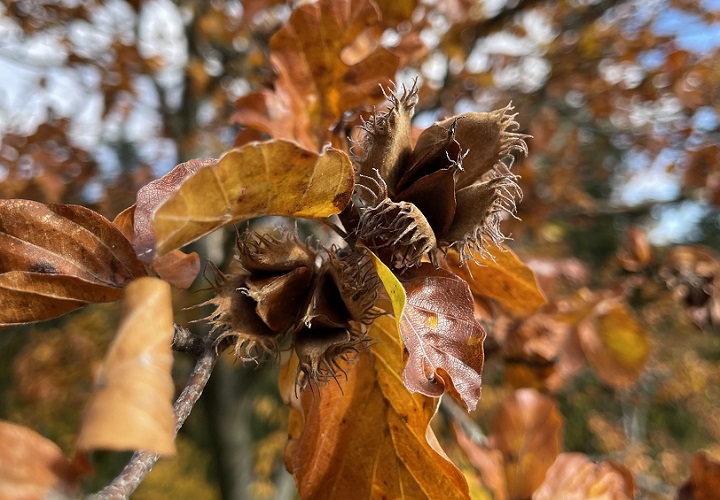Our recent study examined how tree size affects the reproductive benefits of masting—a phenomenon where trees synchronize seed production across years, alternating between low and high yield periods. Using data from a 43-year monitoring of European beech (Fagus sylvatica), we found that larger trees benefit most from masting through significantly enhanced pollination efficiency and reduced seed predation during peak seed production years. Specifically, large trees saw larger decrease in seed predation and stronger boost in pollination efficiency compared to smaller trees, which experienced more moderate gains. Interestingly, despite these advantages, larger trees did not allocate a greater share of their reproduction to these high-yield years compared to smaller trees, suggesting limitations or strategic reproductive behavior.
Our study suggests that this seemingly suboptimal allocation by large trees might be due to anatomical constraints, bet-hedging to avoid failures when synchrony with neighboring trees is imperfect, or diminishing returns on reproductive efficiency as seed output increases. While larger trees face higher reproductive costs in off-years, their strategy may balance long-term success by investing more in intermediate-yield years. These findings highlight the complex interplay between tree size, reproductive behavior, and ecological strategies, with implications for understanding forest regeneration, conservation, and climate change resilience.
Read the full story here: https://doi.org/10.1093/aob/mcae197

